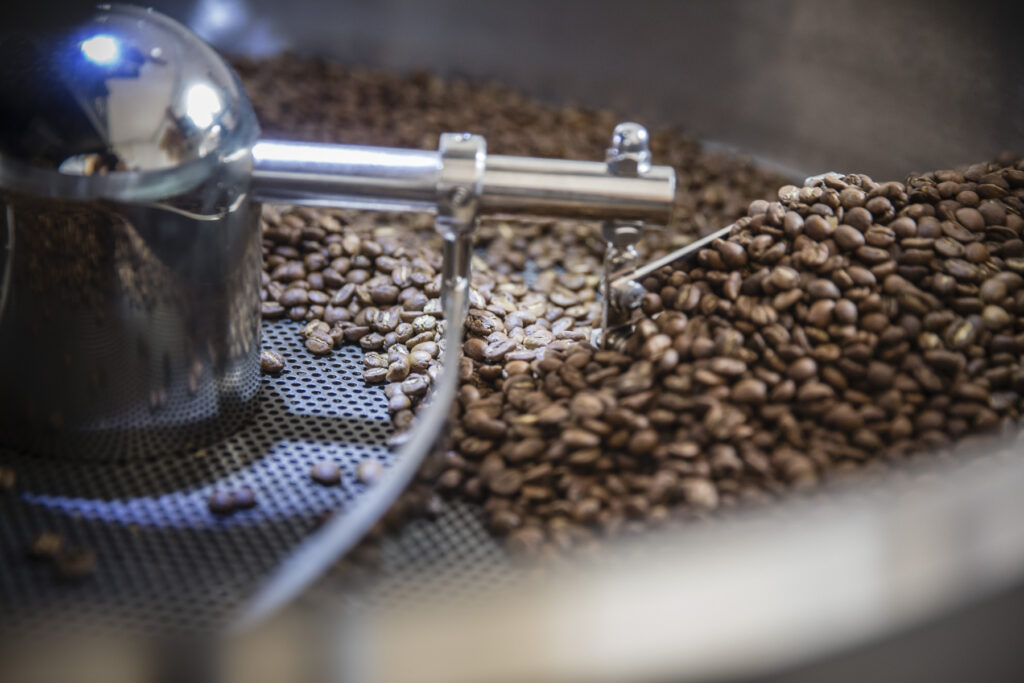

It is useless to have a coffee of excellent quality if it has not been roasted correctly. The roaster has a great responsibility in the coffee value chain since it is through his knowledge and experience that he will be able to develop a good profile for the coffee he has chosen.
The correct roast is one in which sweetness, acidity, density and body develop adequately, bitterness is reduced, a growth in bean volume is experienced and the amount of soluble particles increases.
A good roaster has to experiment and try different profiles to adapt them to the type of bean, origin, etc. in order to get the most out of the product.
Green coffee beans can have different combinations of organic and non-organic components. During roasting we change the chemical structure of the grain
The triggering and visible factor in our roasting process is the increase and change in color and density of our grain, once the grain has absorbed the heat it changes to a yellow color, followed by a light brown color and finally to a dark brown color.
Preparation (heating and drying): Initially the coffee bean absorbs energy, and with the loss of humidity it begins to transform physically. Humidity usually goes from 10% and 12% to approximately 5%. Finally, the steam that accumulates inside the grain causes the onset of chemical changes.
Roasting (Maillard reaction, sugar and acidity transformations) :
At this stage is where sugar is transformed from caramelization to carbonization, chemical components move and react within the grain – proteins interact with sugars and amino acids generating a large amount of aromatic volatiles.
Thanks to the caramelization and Maillard Reaction reactions, we begin to notice the color change from yellow to brown.
Development: When the accumulation of CO2 and steam inside the grain is affected by the pressure it creates a small explosion that originates in the “crack” sound. From this moment on, the roaster, depending on the objectives of the roasting, seeks the organoleptic profile, playing with the reduction of acidity, increase of bitterness and body of the coffee.
It is important to let the coffee rest after roasting for at least 24 hours to allow it to degas.
The development stage of the bean is where the final result of our coffee is determined. It is a process where changes develop very fast, so it needs special dedication and attention.
We can know that our roasting is not the right one for a number of reasons:
–Acid reduction – coffee loses its personality
-Loss of body – lack of density of the beverage, unpleasant sensation to the touch
-Thedevelopment of bitterness(carbonaceous or/and vegetal)
–Restricted grain volume development – compact and hard grain is more difficult to grind and infuse
-Lesssoluble particles – less intensity and beverage quality
-Poorerextraction – poorly developed grain physically and chemically will create more difficulty at the time of extraction.
These are a few hints about the roasting of coffee and how it determines the result of our cup, the roaster must control and take data of the critical elements during the stages and the most important thing is to TASTE to be able to determine the results.
At Mare Terra Coffee we can advise you on the most beneficial roasting for your product.
